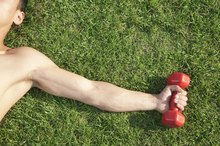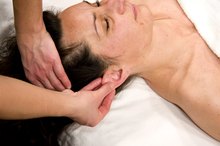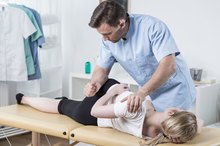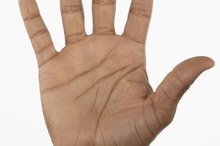What Are the Functions of the Muscles That Move the Ears?
If you've ever tried to move your ears, you'll notice that it's not the ears themselves that move but the muscles surrounding them. Muscles in the scalp and in the face, jaw and the neck may facilitate movement of the ears, according to Jocelyn Selim in the June 2004 issue of Biology and Medicine. Even the simple act of swallowing shifts the position of the ears. Some little-known muscles are responsible for moving the ears. Animals have the ability to shift the position of their ears, but humans do not.
If you are experiencing serious medical symptoms, seek emergency treatment immediately.
Ear Anatomy
The external parts of the ear include the pinna, which is the outer, cartilage portion of the ear. This projection of cartilage that grows from the scalp is surrounded by muscles that control functions such as talking, chewing and swallowing. When these muscles are engaged, the pinna or auricle of the ear appears to move. The cartilage portion of the ear itself doesn't contain any muscles, so it can't move on its own.
- The external parts of the ear include the pinna, which is the outer, cartilage portion of the ear.
Auricle
What Are the Names of the Muscles in the Arm & Shoulder?
Learn More
The anterior, superior and posterior, or front and rear auricle muscles, may also help shift the position of the ear, according to Academic Dictionaries and Encyclopedias 1. This gives it an appearance of movement. The anterior auricle is a small muscle found just in front of the ear; the superior auricle is a bit larger, found directly above the ear; and the posterior auricle is a very small muscle found behind the ear. These muscles are connected to tendons and bones of the skull at one end and the skin that surrounds the ear on the other. Some people can concentrate and move these muscles, giving the appearance of literally moving the ears forward and backward.
- The anterior, superior and posterior, or front and rear auricle muscles, may also help shift the position of the ear, according to Academic Dictionaries and Encyclopedias 1.
- These muscles are connected to tendons and bones of the skull at one end and the skin that surrounds the ear on the other.
Temporalis
The temporalis muscle is a circular-shaped muscle that extends from the temple area, up and over the ear 5. It stops midway between the temple and the back of the head, according to Get Body Smart 5. The ends of the temporalis musle connect to the skull in front of, above and behind the ear and other jaw muscles used in the process of chewing. Shaped like a fan, the muscle is connected to ligaments that slightly shift the position of the ear when chewing.
Platysma
Ear Acupressure for Losing Weight
Learn More
The platysma is a very large muscle that envelopes the lower chin and jaw and extends down along the front of the throat, according to Wesley Norman, Ph.D. and doctor of science. The muscle is also connected and combines with movement of the sternocleidomastoid muscle of the neck -- which connects to the skull just behind and below the ear -- and the masseter muscle, found in the upper jaw, that when used in swallowing movements may also shift the position of the ear.
Related Articles
References
Writer Bio
Denise Stern is an experienced freelance writer and editor. She has written professionally for more than seven years. Stern regularly provides content for health-related and elder-care websites and has an associate and specialized business degree in health information management and technology.









